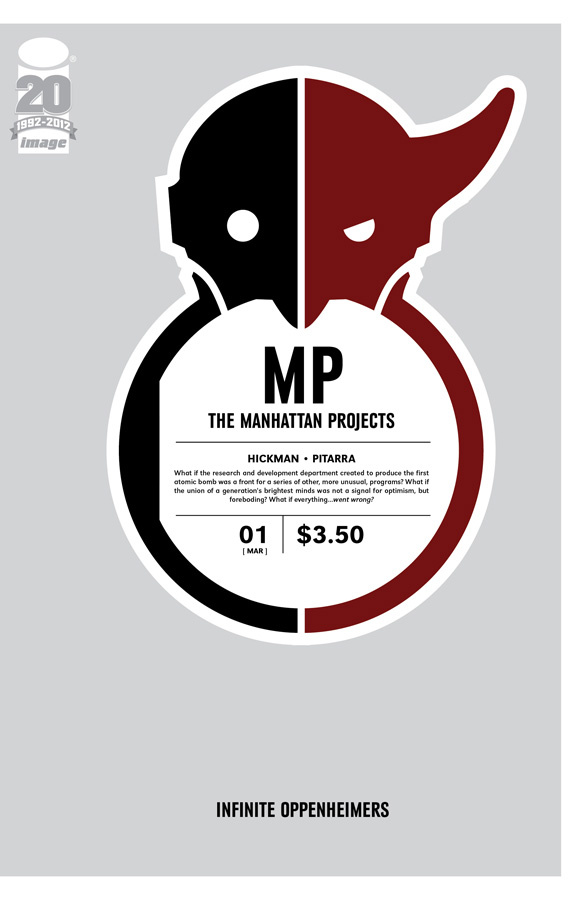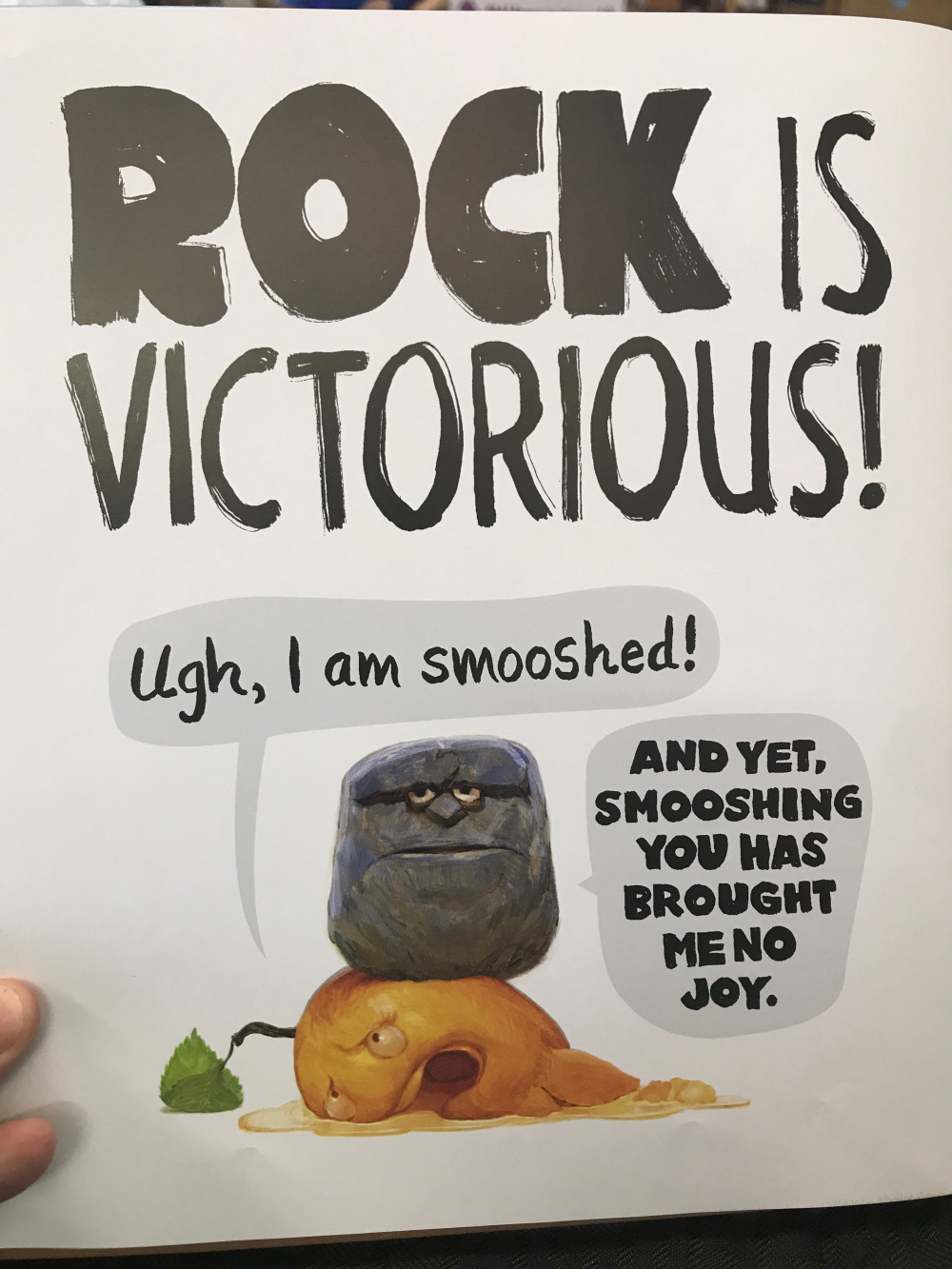
The first issue of The Manhattan Projects starts with Major General Leslie Groves, who was the real-world director of the project. As he recruits what turns out to be Robert Oppenheimer to the project, the series starts to lay out its unique style and approach to history. Oppenheimer’s name is dropped in the last panel of the first page, and is actually used as the touchpaper for readers. Should they be interested to be brought into this period in history, the issue guides them further. Should the name not prove enough of an incentive, the reader will drop away and pick up something else. Within one page, the issue establishes its interest not in unity of vision – but in division.
The issue carries a big twist in the form of Oppenheimer: through a series of two-page sequences, we’re shown the background of both Robert Oppenheimer and his twin brother, Joseph (created by the comic: the real Oppenheimer did not have a twin). Robert’s life is highlighted in a bright blue and runs across the top of the pages, whilst Joseph’s is designated red and runs through the lower half. As Robert studies and grows and develops into impressive scientist, so Joseph degrades and becomes a cannibalistic mass-murderer, locked into an asylum and left behind.
Hickman’s very clearly taking the very idea of splitting the atom – so important in creating the bomb – and showing another destructive representation of the concept. It also introduces a concept which in some ways could be suggested is designed to ‘rescue’ Oppenheimer’s reputation from the creation of the atomic bomb. As the issue continues, we see that Joseph escapes the asylum, murders his brother, and consumes the body, under the belief that this means he will house his brother’s soul forever.
In the process, the comic shows that the atomic bomb was the creation of a decent, scientific mind being corrupted by a genocidal outside force. Whilst it could be argued that this quite handily represents how the military treated the scientists who were part of the Manhattan Project, it seems more clear that the issue is looking to admire Oppenheimer and provide a reason for his work – which ultimately murdered hundreds of thousands of people when put into action.
The series also has another struggle in the way it depicts the way – with science being a starting point for any idea the creative team want to throw wildly at the reader (sentient origami being the standout of this first issue) – that the war influences everything. A fight scene breaks out partway through where the Japanese attack America head-on with an army of Honda-designed robots, each of which yell in Kanji and attack with feudal weaponry.
Hickman’s careful research of American matters displayed elsewhere in the issue doesn’t extend to the outside Asian forces who are depicted as invaders here, as he dumps a Torii Gate on top of the device dropped into the American labs. He ascribes this as an aspect of Buddhism and indicates that Buddhists are an established part of the attack force against America. Although this is an alternate reality, it does seem strange to decide that in this world Buddhists do not follow the belief of non-violence which lies at the heart of the religion in the world today – and even stranger to visually indicate this with a Torii Bridge, which are part of Shinto, and not Buddhism.
With the issue primarily dedicated to following Oppenheimer on a guided tour-turned-gun battle through the labs, we only have brief glimpses of the other scientists who were part of the Project and who will likely be returning in future issues. Both Glenn Seaborg and Edwin McMillan appear in protective suits, apparently looking to delve into alternate realities in order to find weapons to use against their enemy. We also see Einstein himself, who seems to be tasked with some kind of ancient artifact. The issue indicates that Einstein is not in the good graces with Groves, which again helps match the ridiculousness of the series with the real-world project.
The first issue concludes with the reveal of Oppenheimer, as suggested in the title of the issue and throughout the story. It becomes clear that when, at the start of the issue, Hickman has the character state “I am not my brother”, he is fascinated with the nature of duality. Given that the last page shows Oppenheimer flanked by several of his own alternate realities, variously smiling and glaring at the reader to sinister effect, this will be the defining theme of the character, and perhaps the series as a whole.
Issue 01: Infinite Oppenheimers
Published in March 2012
Writer: Jonathan Hickman
Artist: Nick Pitarra
Colorist: Jordie Bellaire
Letterer: Rus Wooton





